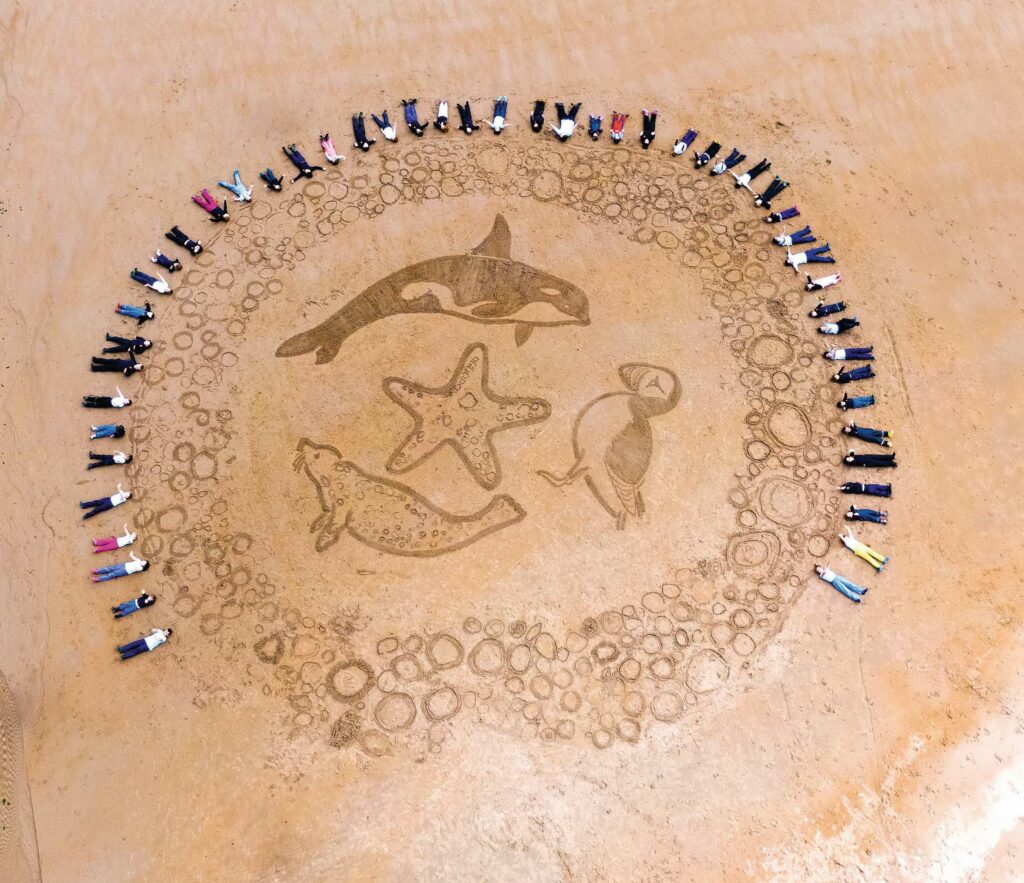
Shore start
Once a week, all year round, a group of lucky children from Northumberland swap their classroom for a day on the beach. This natural setting provides a great way to learn, writes Caro Giles
Photos: Jason Friend
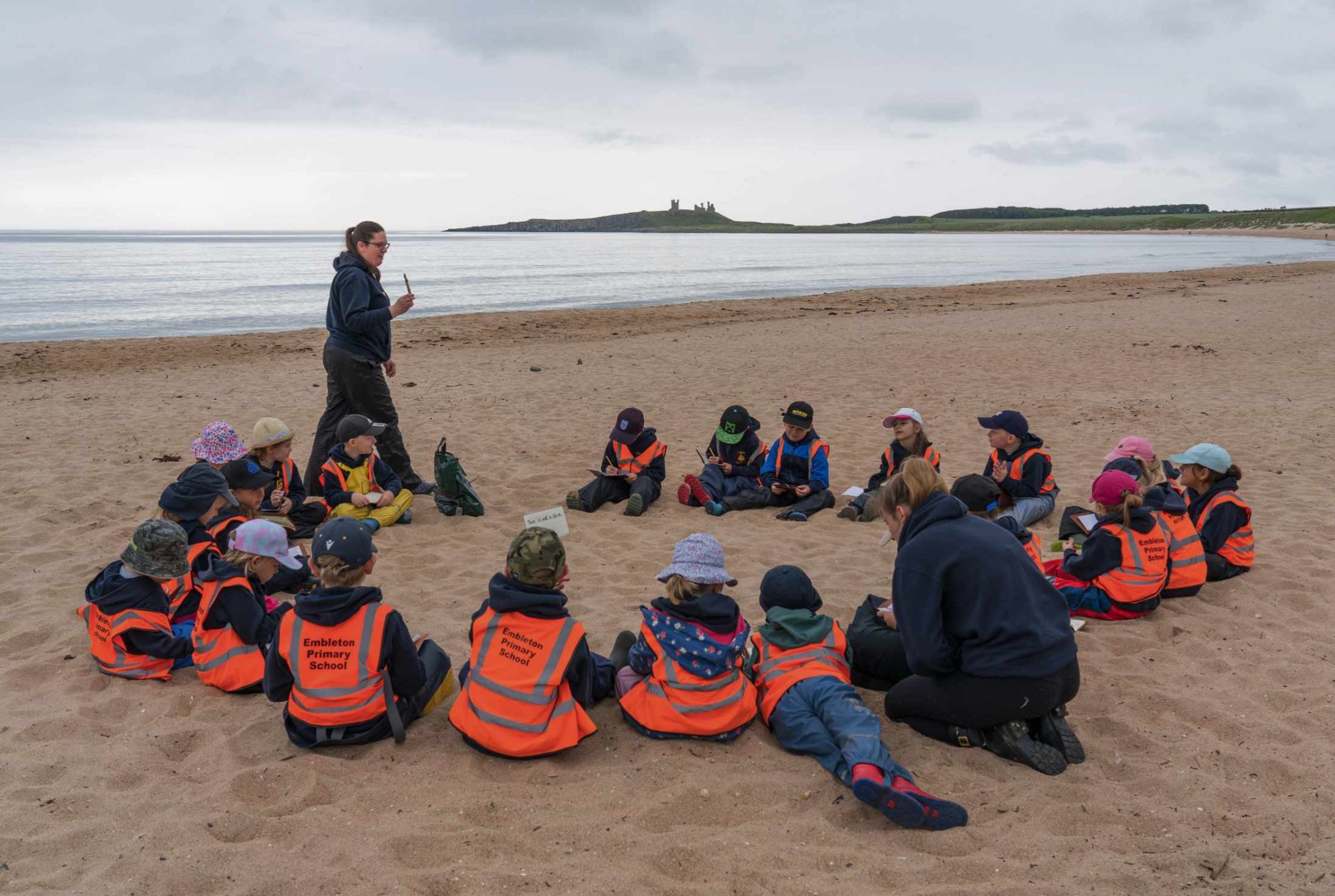
For most of the year, Embleton Bay is almost deserted, a magical curve of sand on the edge of the world. When you approach from the dunes, the crunch of sea-scraping sand hits you first, and the marram grass slaps your legs. Pearly shells litter the path and oystercatchers erupt into the air as the skies unfold.
The dunes drop away on to the beach and you are greeted with a clear stretch of glossy sand burning orange under the sun, licked by dancing waves that froth and churn. If you are lucky, a black head will be bobbing in the water, the whiskery face of a seal. Further out, beyond the ancient rocks below Dunstanburgh Castle, dolphins flick spray into the air, arching their gleaming bodies like rainbows.
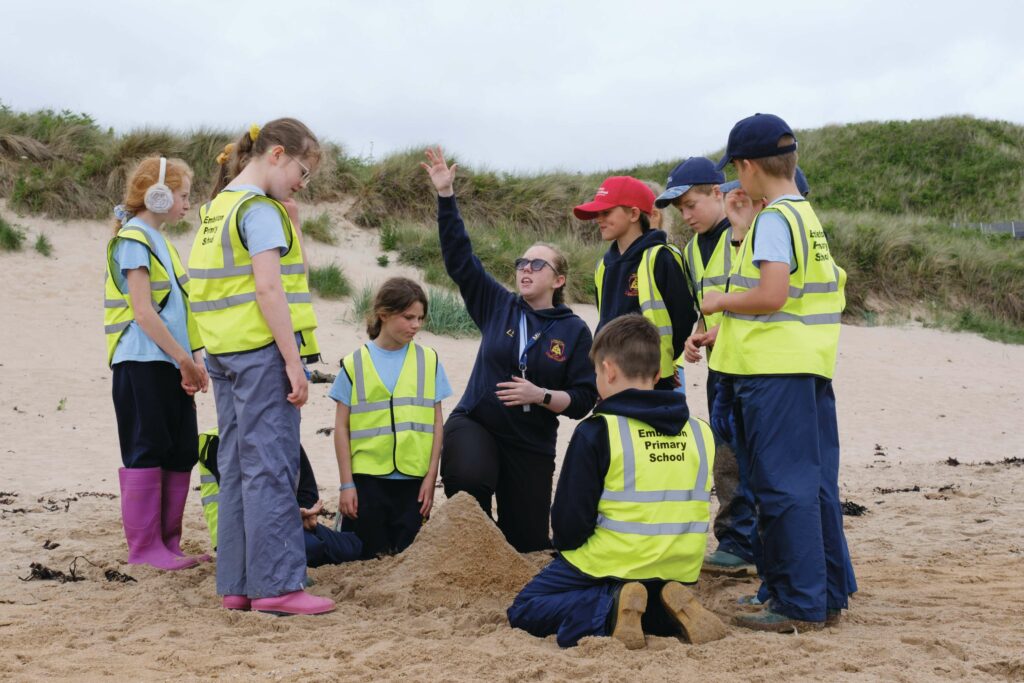
This is where the pupils of Embleton Primary School come every Friday – to learn. Pulling on waterproofs and wellies, 53 children, aged from three to 11 years, walk down the hill towards the sand dunes. “It’s my favourite day of the week,” seven-year-old Mia tells me. In all weathers, the children, along with seven teachers and learning support assistants, cover topics as diverse as electricity and fractions, as the beach is dotted with high-vis jackets and squeals of excitement float over the rocks.
FRESH-AIR APPROACH
The beach school is part of an outdoor learning movement that has grown in popularity since the 1990s, when forest school provision became more widely available. The Institute for Outdoor Education describes the importance of outdoor learning in enabling children and young people to form sustainable self-led relationships with the natural environment, and engage more effectively with education to benefit from better health and wellbeing. Beach schools are a relatively new initiative; international training organisation Forest Schools Education developed the first accredited beach school training for teachers over 10 years ago.
Staff employ a range of teaching methods, from more traditional written work to creating number sentences in the sand with sticks. Embleton Primary School headteacher Nicola Threlfall says the first thing she looks at when planning a unit of work is which learning objectives could be better suited to delivery outdoors. The children are less inhibited outside, she explains, so teachers consider how they can use the beach and its surroundings, offering outdoor learning linked to the curriculum.
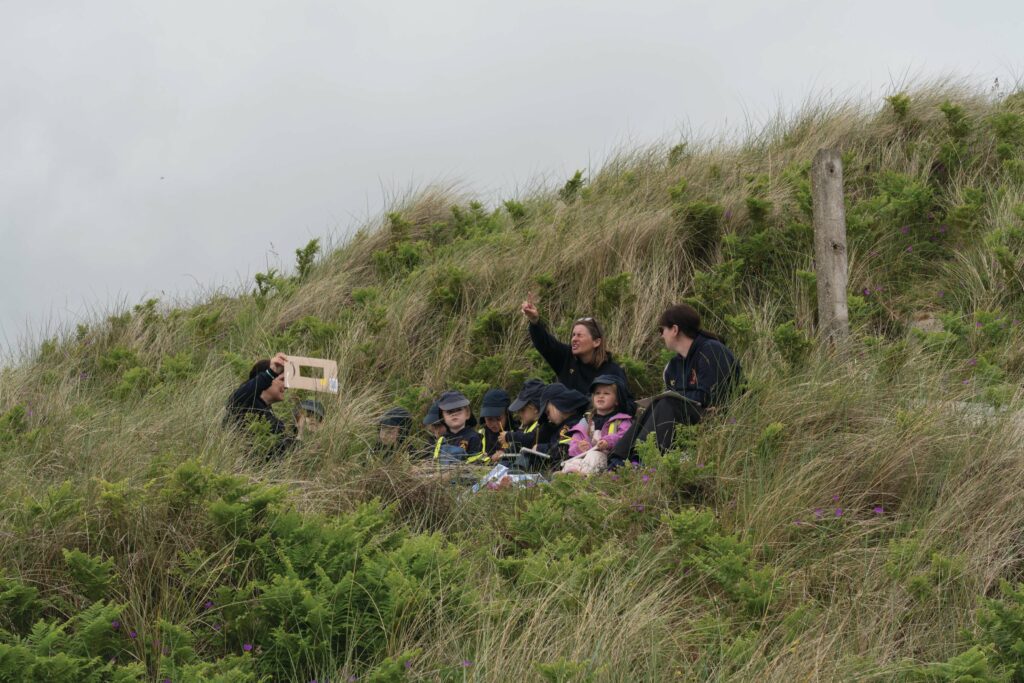
Five-year-old Arthur tells me he loved making porridge on the beach, part of a series of activities linked to the story Goldilocks and the Three Bears. Marley, aged six, says: “I love writing at the beach because we have to look and listen to everything around us and describe it.” It is this exposure to the outside world that seems to inspire the children’s imagination, whether that be re-enacting the Viking landings or exploring Beowulf.
Sometimes the environment itself does the teaching – Nicola explains there are huge benefits to giving children the opportunity to just ‘be’, especially for those children who struggle with sensory processing or have additional social and emotional needs. Watching the waves, lying on the sand feeling the wind and sun on their faces, rolling down sand dunes or listening to the sounds are all an essential part of the beachschool experience, enabling children to explore, test their own limits and understand their place in their environment.
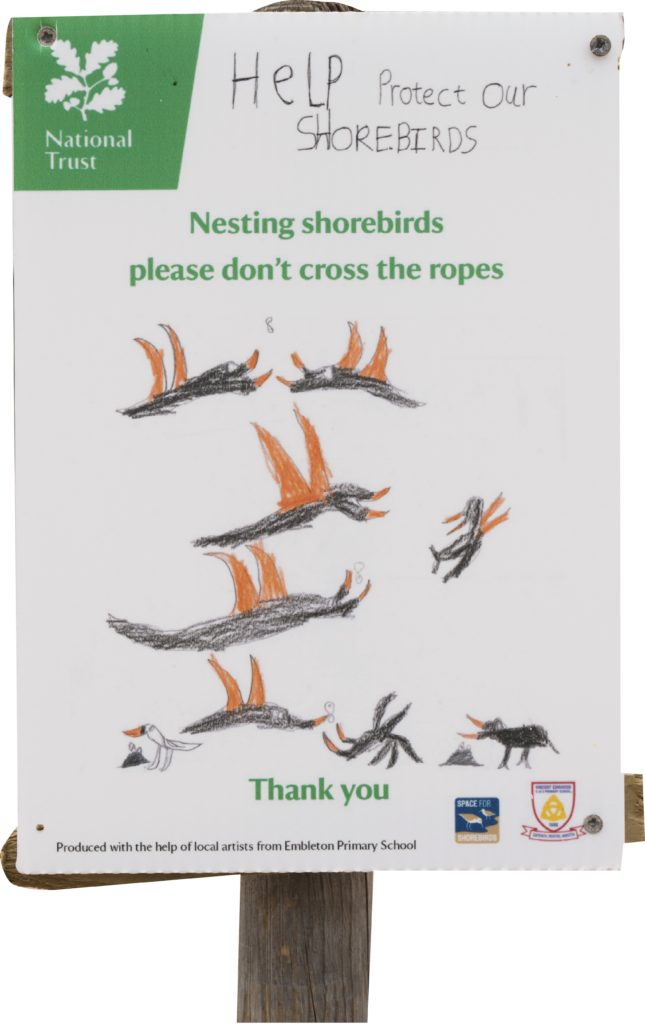
Initially supported by Mudlarks, a local beach-school provider, the staff are now confident in their own delivery of outdoor sessions and it has become an integral part of the curriculum offered by the school. The children’s understanding around safety on the beach is crucial, and rules are reinforced at each session.
Bridie Melkerts, beach school leader at Mudlarks, tells me the beach strengthens the children’s connection with nature. She loves to share her enthusiasm and enjoyment of the natural world with them, pointing out the first swallows or discussing what might have happened to a dead guillemot.
POEMS BY PUPILS
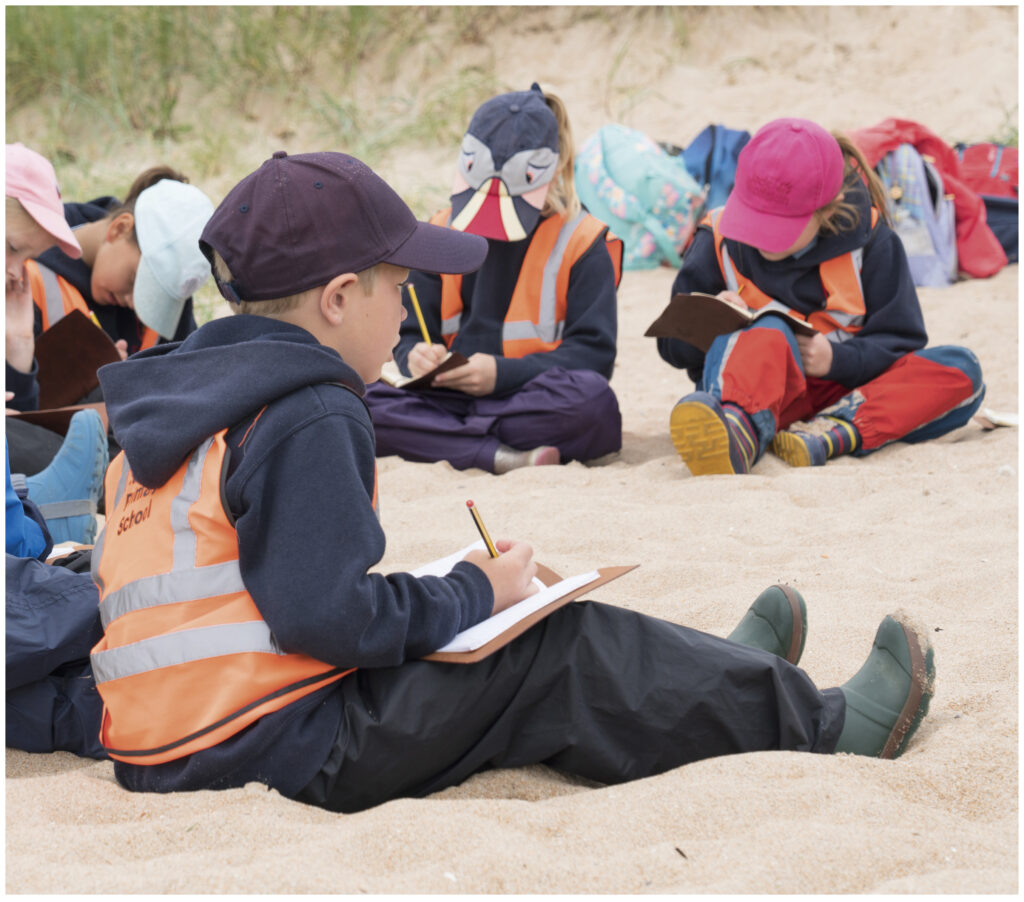
What Is The Beach To Me?
As time flies by, the sun shines brighter
Every step of the way the waves ring in my ears as they crash to the shore
The cold sea sings to the beating waves of the people walking past
Dogs run their mighty paws over the soft sand
Roaring their songs to their owners, hearts pounding
The rocks stand eroded by the salty sea, a habitat for wondrous creatures
Birds catching their prey, ripping them and feasting on their guts and bones
That’s what the beach is to me.
Summer-Rose (year 5)
Question Poem, inspired by Man On The Beach by Joshua Siegel
Boat on the sea
Where is it sailing?
How long will it take to get there?
Why is it moving so slowly?
Has it come from far away?
Where has it been?
Is it sinking?
Why has it got smoke come out?
Flo (year 2)
Sandy, Rocky, Busy
The waves crash into the smooth sand
The people strut along the beach like fancy cats
But still she smiles. Arthur (year 5)
Deadly, Loud, Waves
As the water crashes on the rocks and leaves prints in the sand
As the breeze shivers my bones and cold shoulders inside me
The mist comes off the waves and into the air
But it’s still blissful.
Thomas (year 5)
BUILDING STAMINA
There’s no denying the privileged position Embleton School is in – the beach is within walking distance of the school gates. It’s one kilometre down the hill and another one back up that can prove challenging for little legs. Older students are paired with younger ones and it’s clear that the children do become more resilient outdoors, with Lexi, aged nine exclaiming: “I’m not scared of the wind or the rain, we are outside in the elements!” Nicola confirms that the noticeable improvement in the children’s stamina and fitness levels is one of the main advantages of the beach school.
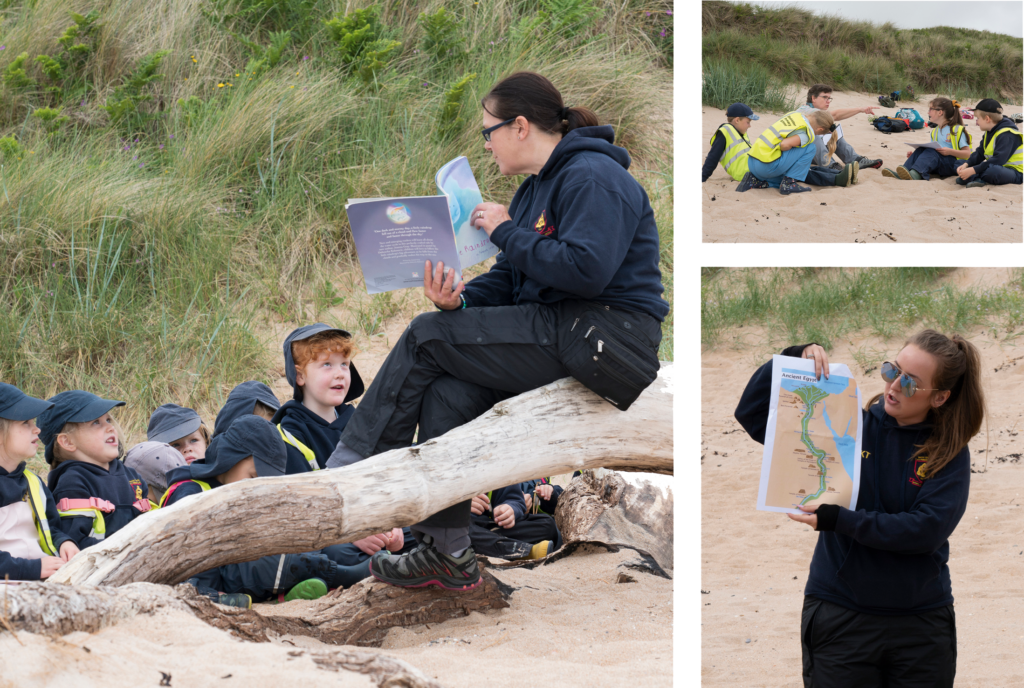
During the winter months in Northumberland, the weather can be challenging. Sand blows in ripples across the beach and gulls are tossed about on snarling waves. I wonder how the children cope with the biting north winds, but Nicola says they like to get the kids out on the beach in all weather. If it’s raining, they head to the bird hide; when it’s cold, the kids warm up by doing more physical activities. The staff take hand-warmers and hot drinks to share and a stock of warm clothing. On warmer days, they sit on picnic tables outside to enjoy their lunch.
For students living in urban locations, access to nature can prove more of a problem. Although these pupils are more likely to walk to school, local authority budgets have been slashed in recent years, having a direct impact on parks that are vital in terms of accessible outdoor space. I spoke to Harriet Menter, education manager at Scotswood Garden, a charity in Newcastle-upon-Tyne, who explains that many children do not have gardens, green spaces at school, or access to welcoming green spaces nearby, and their parents lack the means to access spaces further afield. Some schools run forest schools in their own grounds, but few urban schools have a space that is suitable. Many make use of community gardens, local parks and nature reserves. With charities like these playing such a valuable role in offering education outside, there’s no doubt that an increase in beach schools around Britain’s coastline would benefit schools and families.

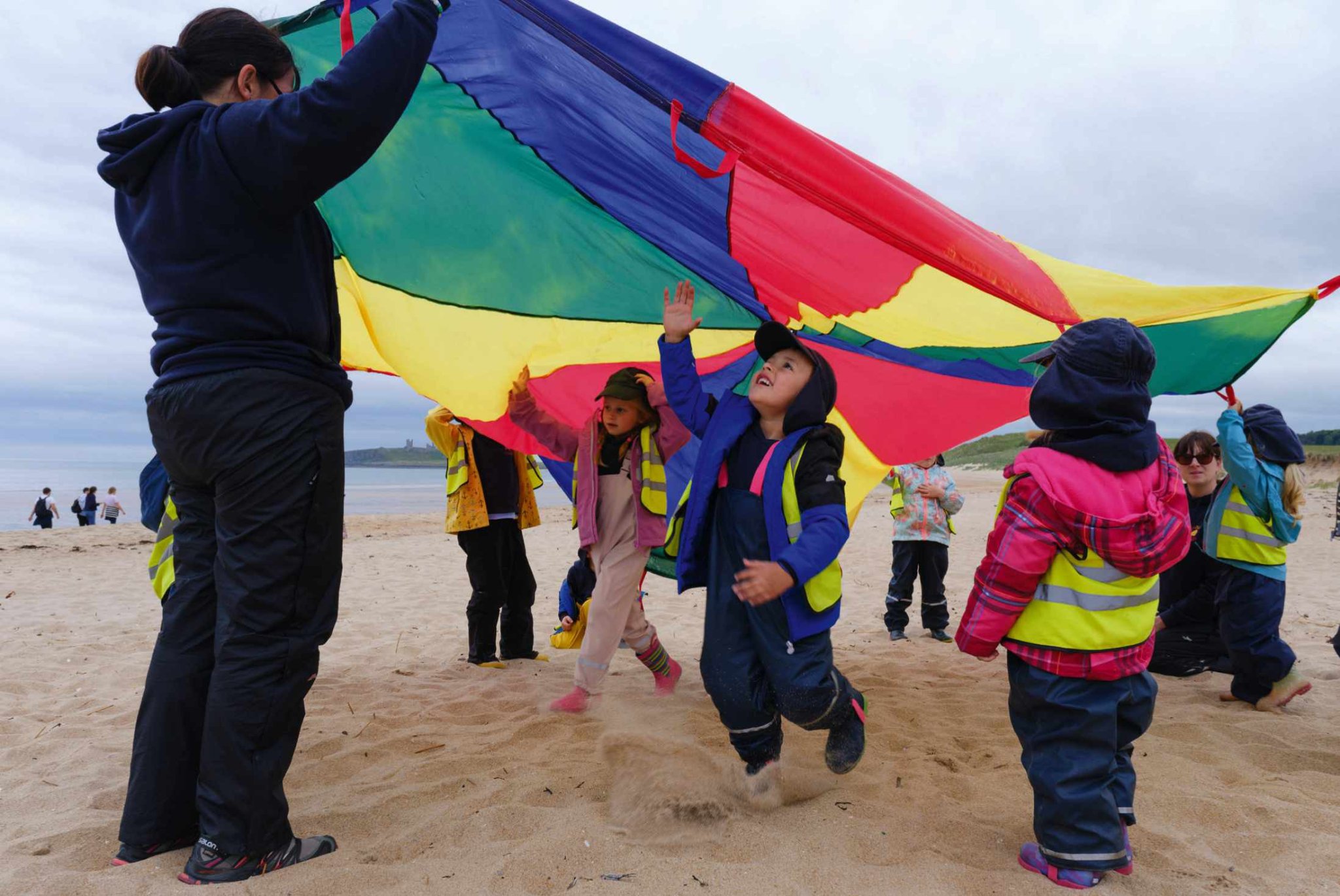
NATURAL EDUCATION
There is value to be found in online resources, too, in terms of engaging children and fostering an interest in our beaches. During lockdown, the students at Embleton enjoyed a virtual session with the Rock Pool Project, a social enterprise based in Cornwall that encourages people of all ages to discover marine life found around the UK coast. It was a huge hit with the children, who excitedly called out “Bingo!” as they spotted hermit crabs and starfish crawling out from the seaweed. The concept of the rock pool as a microcosm of the ocean, an alien world, is irresistible.
Embleton Primary School is demonstrating how successful outdoor learning can be. With support, investment and confidence, can more schools mould the curriculum to include regular time outside for their students? Whether it’s building ponds, planting seeds, watching birds or investigating the weather, time in the natural world needs to be accessible for children wherever they live. The pandemic has taught us that nature is everywhere and it is our responsibility to care for it. One of the students tells me that “nature helps us learn in new ways” – and perhaps that is precisely the point.

Caro Giles, as Caro Fentiman, won BBC Countryfile Magazine’s New Nature Writer of the Year in 2021. Her book Twelve Moons: A Year Under a Shared Sky is out now (Harper North, £14.99).
OUTDOOR SCHOOLS NEAR YOU
• Visit the Forest School Association website to find a local provider. forestschoolassociation.org
• Forest Schools Education offers a Beach School Training course. forestschools.com
There are beach-school providers around the UK. Some are listed below:
• Lancashire lancswt.org.uk/beach-school
• Mudlarks, Northumberland mudlarksoutdoors.com
• The Rock Pool Project, Cornwall therockpoolproject.co.uk
• Northern Ireland beachschoolsni.com
• Wales beachacademywales.com/education
• Scotland littlegreenexplorers.com/outdoornurseries-in-scotland/